10 South American colonial towns well worth a visit
Many travelers find that colonial cities hold a unique and enduring appeal. Our favorite places are those where you feel like you’ve gone back in time from the moment you arrive.
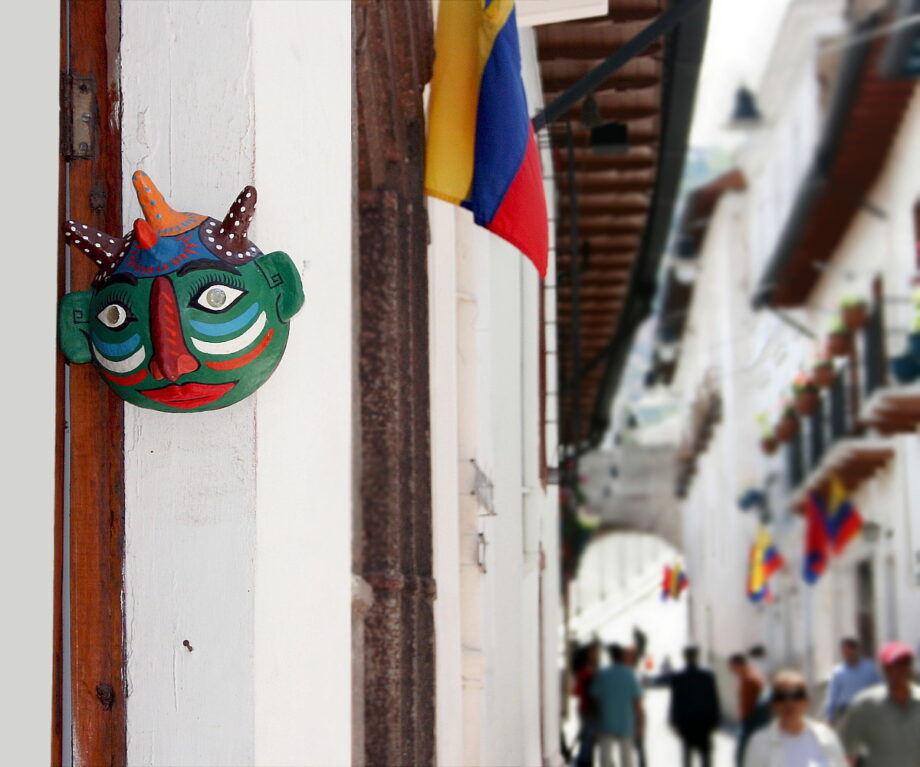
The romance of old plastered walls, cobbled streets and candy-colored houses create a picturesque and charming ambiance. Your stay may be at a time-honored-yet-stylish posada in an “old town” quarter, steeped in history and offering a nostalgic window into the past. There, you’ll wake up to a rich cup of coffee, and from your balcony that overlooks the central square, you’ll observe the colorfully dressed locals down below hurrying along on their way. These are places where can relax, slow down, and relish a few days immersed in the enchantment of days gone by.
So that travelers might experience some of these chimerical locales here in South America, we’ve outlined our top ten choices.
Quito’s “Old Town”: The best-preserved historic district in South America
Recognized by UNESCO as possessing “the best-preserved, least altered historic center in Latin America,” Quito’s Old Town is certainly the jewel in this capital city’s crown. Awash with ethnic markets, historical plazas, and well-weathered buildings, it’s easy to understand why this colonial center was the first to be designated a World Heritage Site.
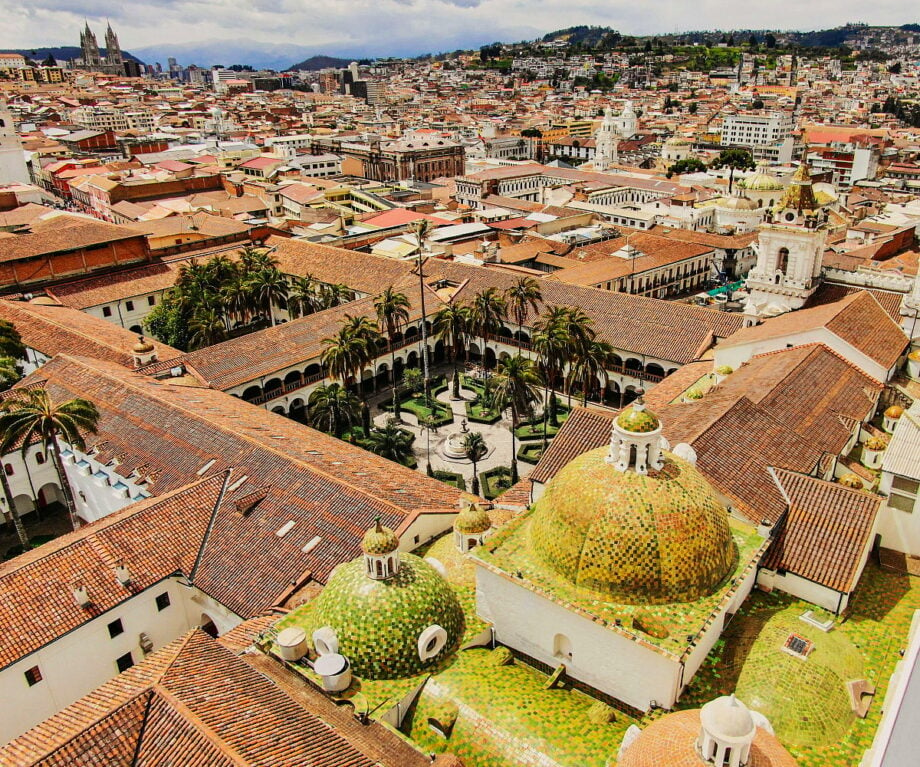
Risking pure sensory overload, any tour of Quito’s exquisite historic district will have you wandering along narrow cobblestone streets packed with artistic and architectural treasures. Be prepared to discover picturesque colonial-era plazas, 17th-century cathedrals, and age-old monasteries – all guardians of a stunning artistic and cultural heritage. Within these sanctuaries, you’ll find altars, pulpits, pillars, and arches adorned head-to-toe in gold leaf, allowing these elements to shine like jewels.
A few of our favorite examples of the Spanish, Italian, Moorish, Flemish, and indigenous artistic fusion that characterize this historic district are the monasteries of San Francisco, Santo Domingo, and the Church of La Compañía.
Then too, at the always-vibrant Plaza Grande (“Independence Square”), you’ll find this hub of activity surrounded by the City Cathedral, the Presidential Palace, the Municipal Building, and the Archbishop’s Palace. Nearby, you’ll pleasantly discover the intricately detailed church of the “Compañia de Jesus” to find its spectacular interior inlaid in gold.
Any historic Quito tour will end with a birds-eye view of the city from the panoramic “Virgin of Quito” monument atop Panecillo Hill, which overlooks the capital. This will give you a chance to appreciate Quito from above, and —if the weather permits— to catch a view of the spectacular “Volcano Avenue,” two parallel mountain ranges containing eight of the country’s ten highest peaks.
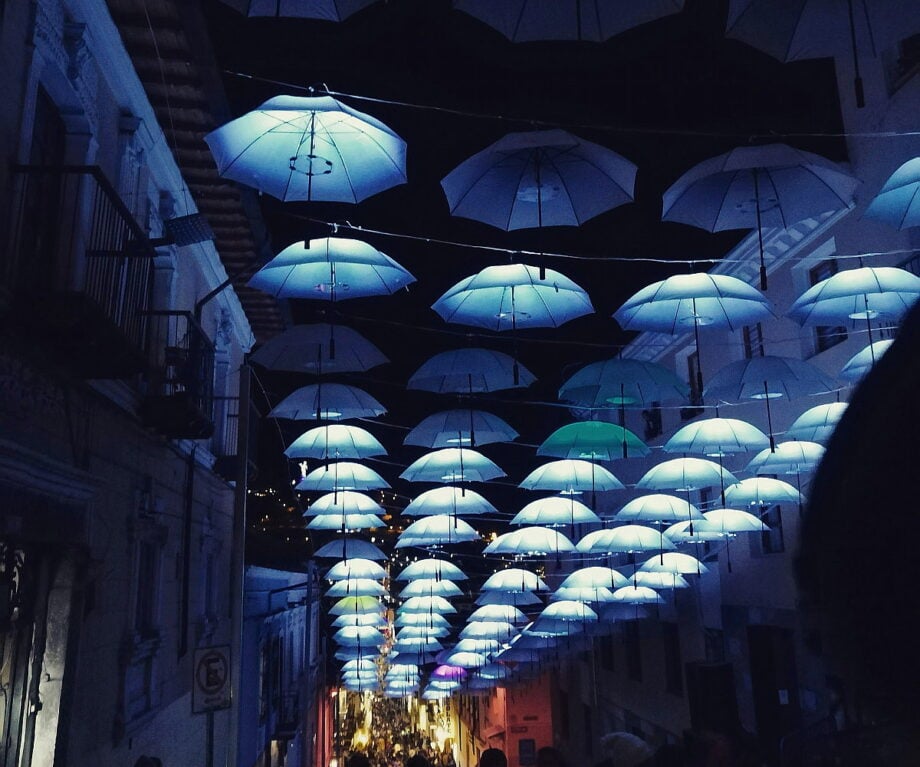
In addition to the magnificent churches, monuments, and museums of Old Town, you’ll also get a feel for authentic day-to-day Quito life. The crowded thoroughfares, ethnic eateries, and typically Ecuadorian market stands selling all manner of locally produced goods serve to give the quarter even more character. Here, visitors can catch glimpses of indigenous locals, each immersed in the hustle and bustle of everyday living.
Quito’s historic district is a captivating blend of colonial architecture, rich history, and cultural vibrancy. It’s a must-visit destination for travelers interested in exploring Ecuador’s heritage and experiencing the unique charm of this well-preserved colonial district.
Cartagena Colombia’s Walled “Old City”
The undisputed queen of the Caribbean coast, Cartagena and its Ciudad Vieja (“Old City”) is a beguiling tropical port steeped in history and culture. The colonial center is surrounded by an imposing six miles of stone wall that was built in the 17th century to protect the city from swashbuckling pirates and other external threats (you can still walk along the top of the wall and enjoy stunning views of the city).
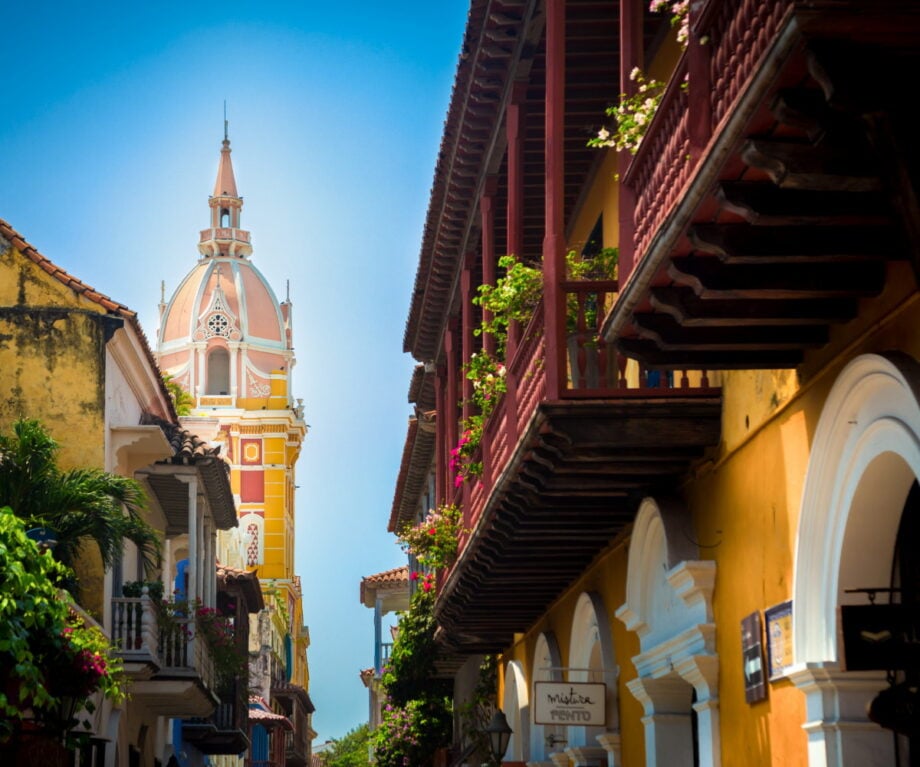
These days, Cartagena’s historic district remains a vibrant melting pot on the Caribbean Sea. The narrow cobblestone streets, hidden plazas, and architecture that you would expect to find in any colonial center town are complemented by the quarter’s Caribbean flair and ever-cheerful atmosphere. This explains the brightly painted houses buildings, flower-adorned balconies, and ornate doorways that line the area’s streets.
And note that many of these houses and buildings have been converted into upscale shops and swank restaurants. In fact, within the historic district, you’ll also find a wide range of restaurants serving Colombian and international cuisine. Be sure to try the signature Posta Negra Cartagenera meat dish and savor the vibrant culinary scene.
As you wander through the quarter’s streets, be sure to stop for a break from the heat. For this, the historic district has numerous leafy parks and small plazas where you can relax, enjoy an icy drink, or simply people-watch. Plaza Santo Domingo and Plaza San Diego are two popular spots. Here, you’ll also encounter street performers, artists, and artisans selling their wares – from colorful paintings to traditional crafts.
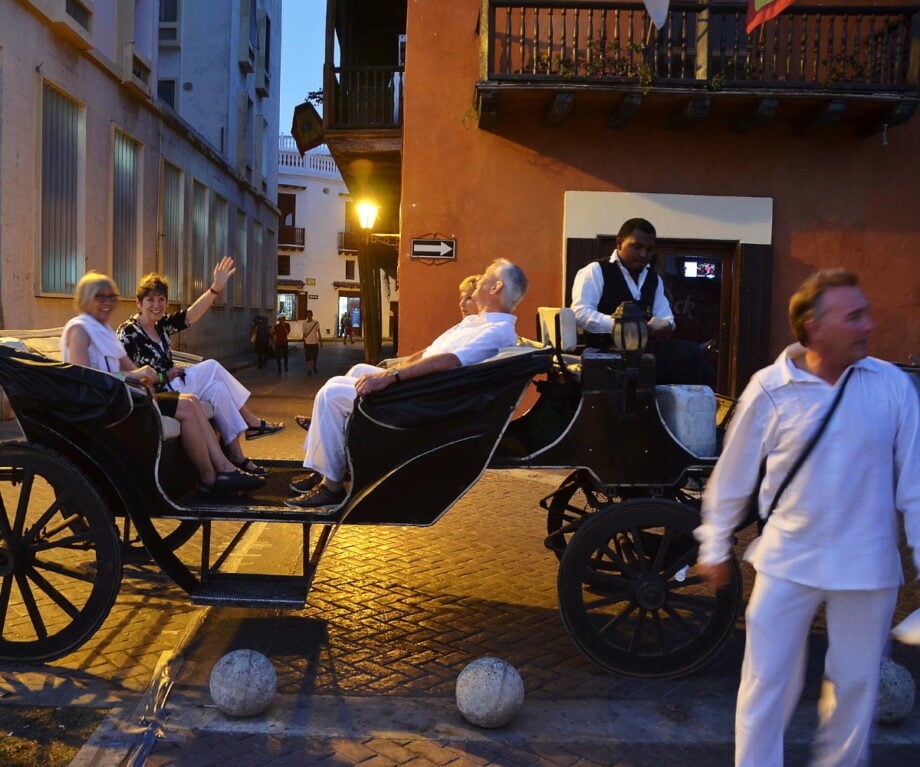
The historic district is also well known for coming alive at night with bars, clubs, and live music venues. It’s a great place to experience the lively nightlife of Cartagena.
Still, when visiting Old Town, take a look in the hip district of Getsemani, which is situated next to the colonial district. It’s a place with a chilled-out bustle, stylish boutique hotels, and laid-back bars. Here, you can leave the busy crowds of the center far behind you.
The historic district of Cartagena is another of the most well-preserved and charming areas on the continent, which allowed its declaration as a UNESCO World Heritage Site. This quarter of Cartagena is a must-visit destination for travelers interested in history, culture, and architecture. It offers a unique atmosphere that transports you back in time while still providing the most modern amenities and vibrant street life.
Cusco, Peru: The Rome of the Americas
The undisputed archaeological capital of the Americas, Cusco and its nearby ruins transport visitors back into the cosmic realm of ancient Andean culture stamped with the colonial imprint of Spanish conquest.
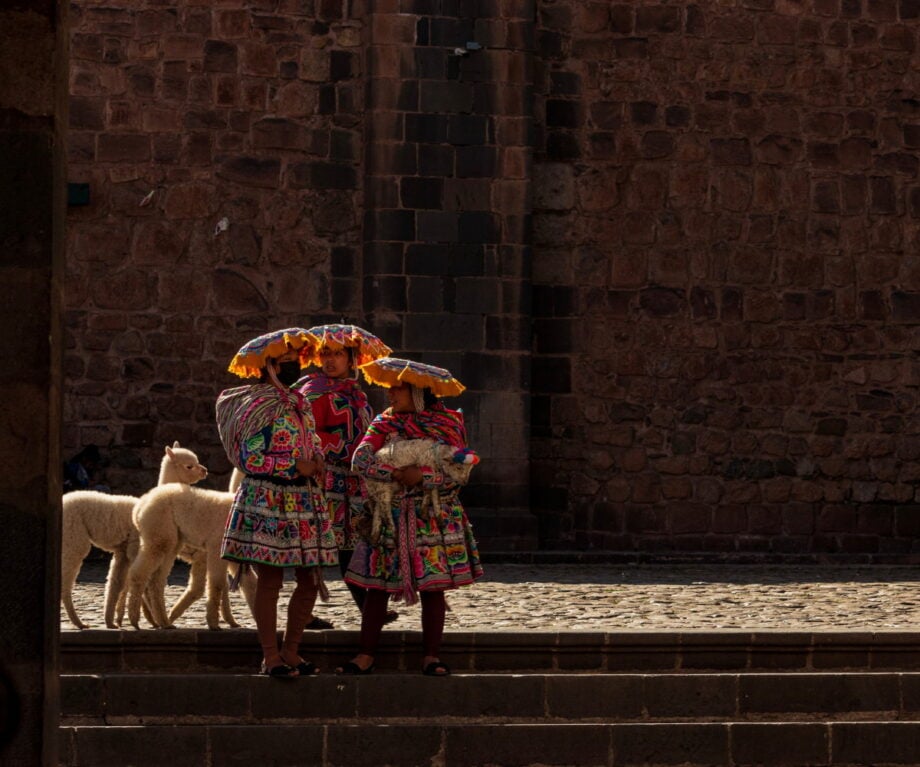
Once the epicenter of the Inca Empire —which itself extended across much of South America— Cusco is home to a storied history that included the rise and later fall of that empire inflicted by the invasion of the Spanish conquistadors. Just as the Spanish built a new fortress atop Incan foundations, today the city showcases a rich infusion of Inca and Spanish heritage.
On the city’s plazas, narrow passages, and cobblestone streets are everything from centuries-old baroque cathedrals to exquisite Incan stone masonry, creating a rare collision of Spanish and Andean styles that has made Cusco like no other place on earth.
For travelers to this city, all roads lead to the Plaza de Armas – the spiritual and nerve center of Cusco. According to legend, Plaza de Armas (called “Huacaypata” in Inca times) was where the first Inca sank a golden rod into the earth by command of the god Inti, thus establishing Cusco as the center of the earth or the “navel of the world.”

Just as the square was the main stage for the Inca Empire’s most important rituals, the Plaza de Armas is the cultural heart of Cusco today. However, this pre-colonial/colonial city offers a range of sights and experiences: from the glimmering Qorikancha (“Temple of the Sun”) and the city’s famous Baroque Cathedral (one of the best examples of religious colonial architecture) to delectable Andean cuisine.
Added to all this is how millions of travelers have at least passed through Cusco on their pilgrimage to South America’s greatest spectacle: Machu Picchu, the fabled ruins that are one of the most impressive architectural feats of the ancient world.
So, if you’re planning a visit to the lost city, don’t overlook a visit to this mystical, wonderous, and unique city. Where else can you find the remains of Inca temples with centuries-old carvings, decked-out women carrying llamas on a leash, grandiose baroque churches, a museum of magical plants, and the liveliest nightlife in the high Andes? No city stands out in both Andean history and modern times like Cuzco.
Everything you need to plan your trip in 2024
🌟 Luxury hotel deals from Booking
🏡 Vacation rentals from VRBO
✈️ Flights from KIWI
🛫 Private jets from Private Jet Finder
🅿️ Airport parking from ParkVia
🛋️ Airport lounges from Priority Pass
🚖 Airport taxis from Welcome Pickups
🚫 Flight cancellation help from AirHelp
🚗 Car rentals from Discover Cars
🚐 Luxury RV rentals from RVshare
🚴 Two-wheelers from BikesBooking
🚅 Trains from Trainline or Rail Europe
🚢 Cruises from Cruise Direct
⛵ Yacht charters from SeaRadar
🛥️ Ferries from Direct Ferries
🎫 Attractions tickets from Tiqets or Klook
🎭 Events tickets from Ticketmaster UK
🏞️ Tours from Viator or GetYourGuide
🌮 Culinary experiences from Eatwith
🏖️ Packages from Expedia US/CA or UK
🛡️ Travel insurance from Safety Wing
🏥 Medical insurance from World Nomads
📸 Vacation photos from Flytographer
🧳 Luggage from Case Luggage
🛅 Luggage storage from Stasher
📚 Travel guides from Lonely Planet
🗺️ Books and maps from Barnes & Noble
📕 eBooks from Kindle Unlimited
🎧 Audiobooks from Audible
🎬 Movies from Prime Video UK
🎵 Music from Amazon Music UK
💶 Travel currency from Wise
📱 SIMs from SimOptions
🌐 VPNs from ExpressVPN or NordVPN
🛂 Visas from iVisa
💸 Earn with Travelpayouts
📨 Seen a broken link? Please contact us!
Salvador de Bahia: The heart of Afro-Brazilian culture
The city of Salvador is an intriguing and colorful place with an energy and an unadorned beauty that few cities can match. Once Portugal’s colonial capital, it cradles not only African culture and traditions passed down through the generations but some seriously attractive architecture from the colonial period.
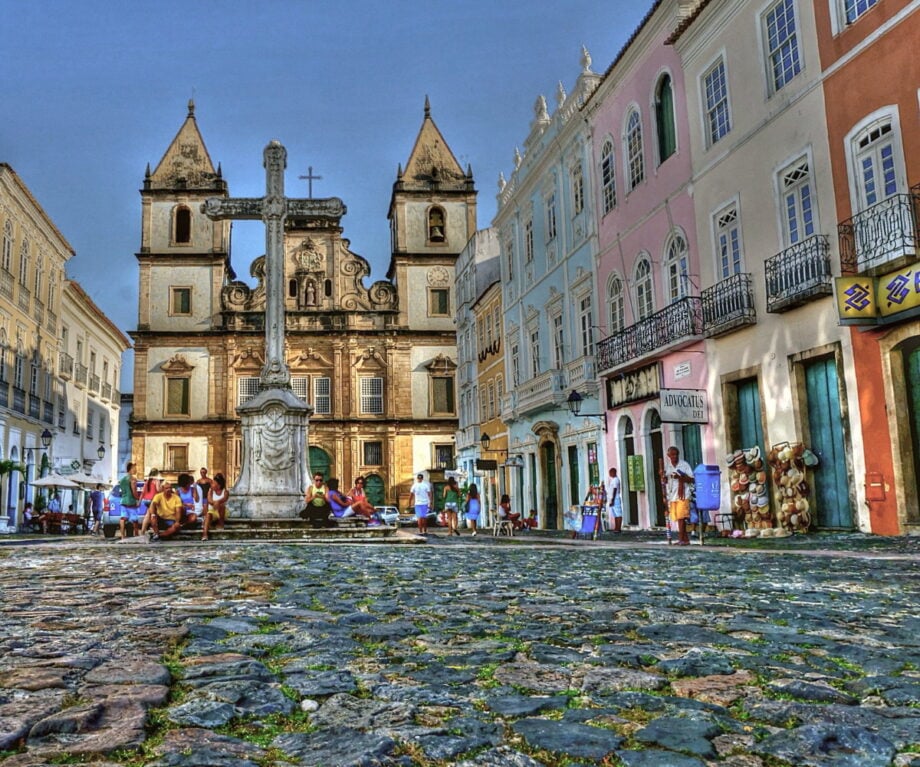
The Old Town of Salvador is Pelourinho, which means “whipping post” in Portuguese, as this was the old slave auction location in the days when slavery was common. After falling into disrepair over time, a major restoration effort in the 1990s resulted in making the area a highly desirable tourist attraction. Today, it’s a UNESCO-declared World Heritage site of magnificent churches and colorful colonial buildings that attract visitors from around the world.
As you wander its several blocks of cobblestone streets and gaze up at the quarter’s historic architecture, you’ll realize, though, that “Pelô” isn’t just for tourists. This old town neighborhood is a prime location for local music, dining, and nightlife. Frequently celebrated here are vibrant festivals, where drum corps pound out rhythms against the backdrop of historic candy-colored buildings almost daily. These same 17th- and 18th-century structures are packed with cultural centers, dance, capoeira, and schools of music – plenty of music.

Easily walkable, Pelo has something to see along every street – from restaurants, cafes, dance, and music to expressions of the Afro-Brazilian religious belief system of Candomblé. Indeed, Pelourinho is rich with African influences that have shaped the city’s identity over the centuries.
In this same vein, be sure to catch a performance of capoeira – a hypnotizing Africa-originated martial arts dance – or mingle with the locals in a samba nightclub. During these activities, or at one of the many festivities taking place in Pelourinho, you’ll get a feel for the rhythms and sounds that so brilliantly define this colorful coastal city.
Ouro Preto: A must-see colonial town if visiting Brazil
The 17th-century town of Ouro Preto is as good as it gets when it comes to Brazilian colonial heritage and history, as perfectly preserved architecture and atmospheric cobblestone streets are delightfully on show, in the most scenic of settings.
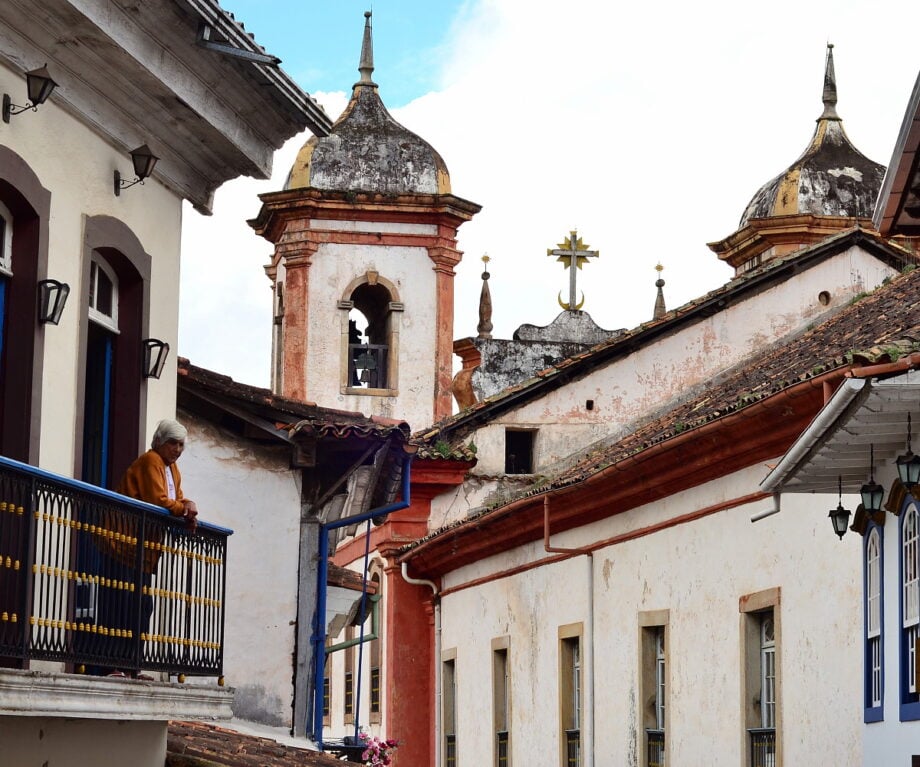
Ouro Preto (meaning “black gold”) was the epicenter of the Brazilian gold rush of the 18th century and is named for its integral part in industry. Though its influence waned with the decline of the mines —and despite its turbulent past and association with slave labor— Ouro Preto has earned its place in the hearts of visitors. This colonial city is a true step back in time and retains an authentic, Baroque nature.
A simple pleasure, but one of the real highlights of visiting Ouro Preto, is to strap on the hiking boots and hit the historic streets in the company of a local guide, learning the tales of this enchanting town. Nonetheless, there’s nothing like getting lost on your own among myriad streets that crisscross between bridges and hills.
Your time in Ouro Preto will disappear all too easily as explore the town’s streets and plazas, taking in its ornate fountains, bridges, and embellishing appointments. While simply walking from building to historic building, it’s Ouro Preto’s baroque architecture and the abundance of churches that will really stand out. This is more than apparent in the outstanding religious art of churches such as Our Lady of Carmo, Pilar, and Antônio Dias – all set against a backdrop of the Serra do Espinhaço mountains.
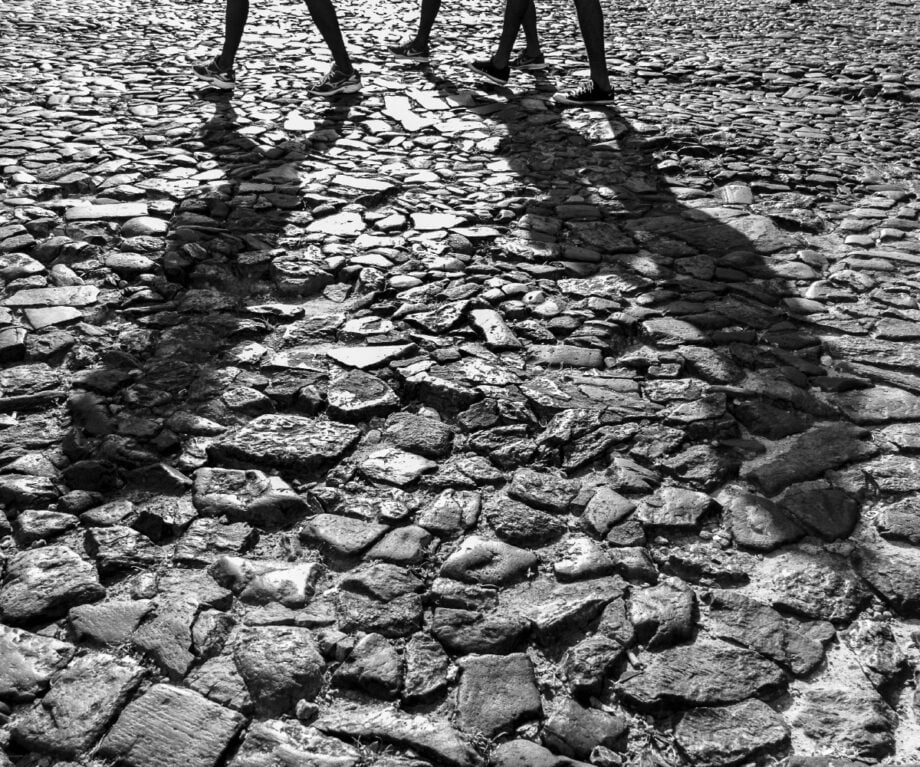
If you do venture further afield, you’re perfectly placed to visit the former mines, plantations, and other colonial towns of wider the Minas Gerais state, getting a first-hand view of this important period in Brazil’s past.
Ouro Preto is a must-see colonial town if visiting Brazil. It’s an excellent stop for exploring on foot and climbing one of the small hills for a breathtaking view of this historic town and its surroundings.
Paraty: A hidden gem on Brazil’s Costa Verde
Idyllically located on Brazil’s Costa Verde (“Green Coast”), the village of Paraty is nestled between the two Brazilian giants: Sao Paulo and Rio de Janeiro. A hidden gem, the colonial town is set among verdant hills of Atlantic forests and fronted by a charming bay.
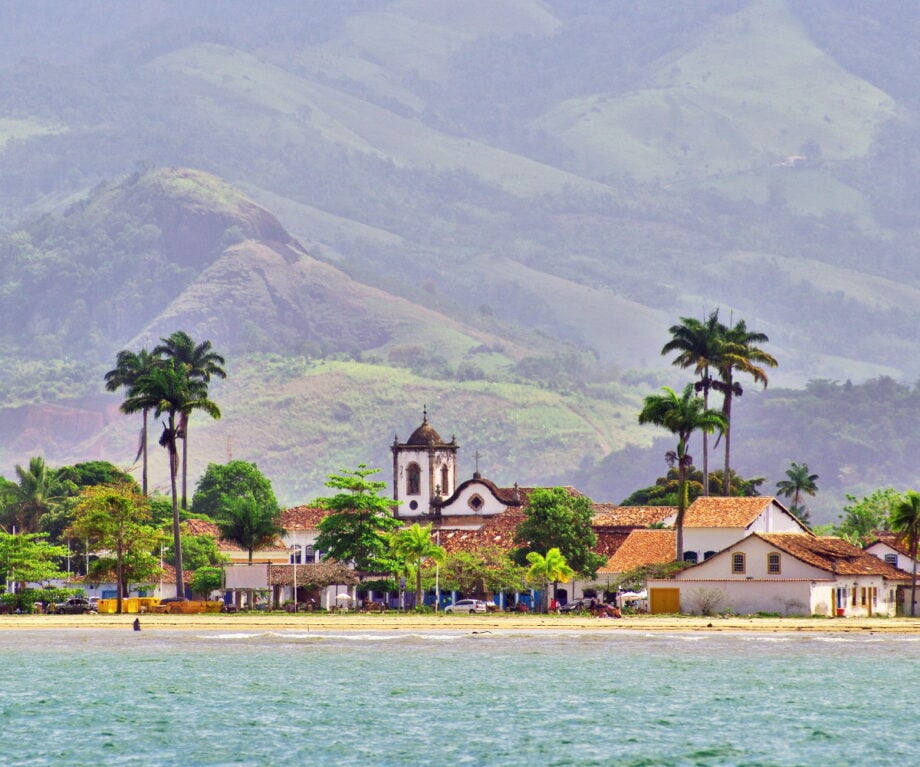
Once a flourishing Portuguese-founded port that served for the shipping of gold and diamonds to Europe in the 16th and 17th centuries, Paraty’s role was later taken over by Rio de Janeiro. As a result, Paraty was forgotten, though this turned out to be a blessing for the captivating village, which today is a UNESCO-declared World Heritage Site.
Since the pace of progress and development passed this place by, its charming buildings were spared. Frozen in time, the town has become a getaway for big-city visitors. As the cobbled streets of Paraty’s historic center were made car-free, and its colorful Portuguese architecture has been lovingly restored, travelers can retreat to this colorful colonial community to enjoy its character-filled avenues and its picturesque harbor while staying in one of the village’s luxury pousadas.
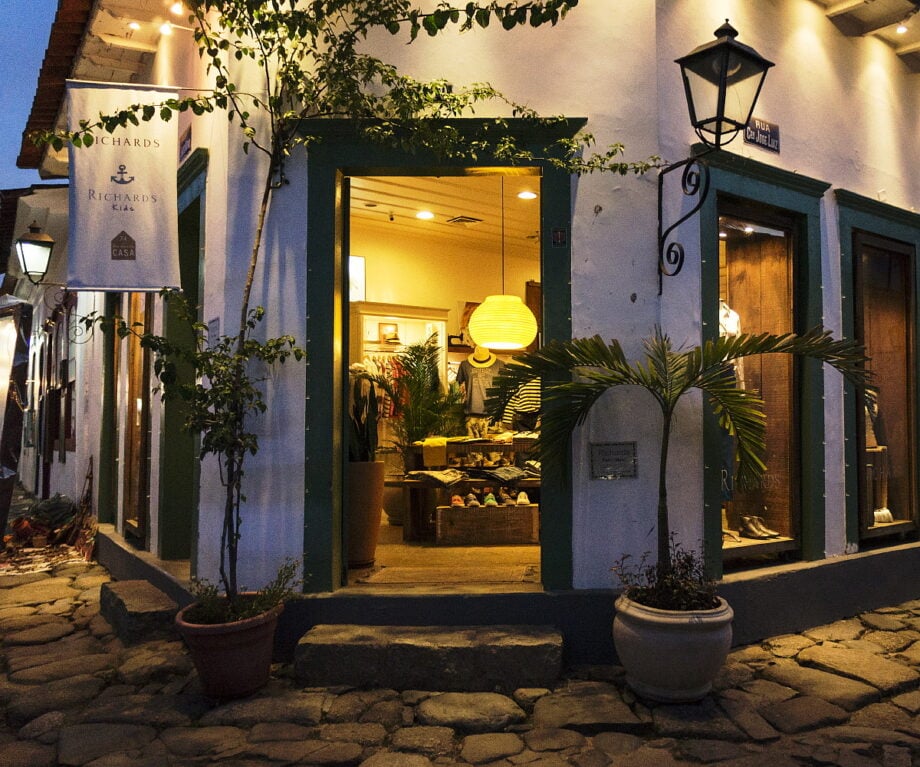
In the characteristic white-plastered buildings with brightly colored doors, you’ll find tastefully decorated hotels with beautiful courtyards, plenty of upscale restaurants with fresh seafood, hip art galleries, and trendy boutiques for browsing.
After relaxing by the ocean, hiking into the hills, or cruising aboard a wooden yacht to nearby uninhabited islands, return to the town in the afternoon for a cold and refreshing Caipirinha on one of the many terraces around the small harbor.
Colonia de Sacramento’s Barrio Histórico (Uruguay)
Take a step back in time in Colonia del Sacramento, Uruguay’s oldest settlement. The village is blessed with picturesque colonial architecture that lines sleepy cobblestone streets and colorful houses. These pleasant features, along with its laid-back riverfront, make Colonia one of the most popular towns on Uruguay’s west coast.
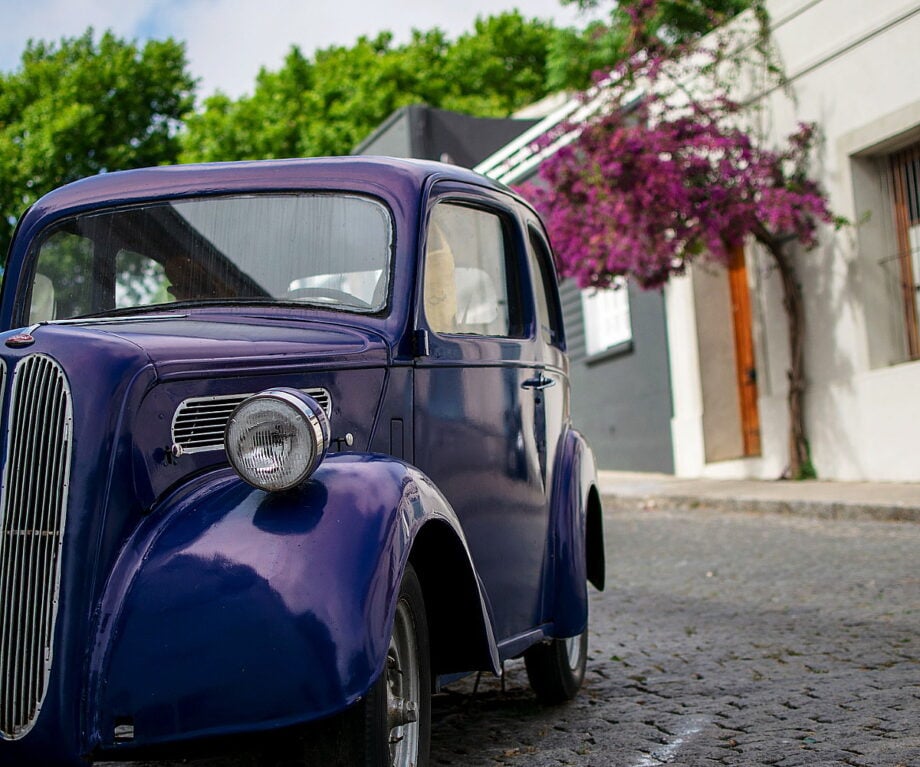
Founded in the 17th century, Colonia del Sacramento changed hands between the Portuguese and Spanish, before eventually becoming part of independent Uruguay in 1828. Thanks to this colonial history, Colonia is a mixture of Portuguese and Spanish cultural influences. But what travelers find most alluring is the village’s Barrio Histórico (“Historic Center”), a walled district awarded UNESCO World Heritage Site status in 1995. Since the whole area is small enough to get around on foot, there’s no need at all for transportation.
Your walking tour might start at the Portón de Campo, the town gate built by the Portuguese in the 18th century; this opens onto the tree-shaded Plaza Mayor. From here, flagstone streets lined with pastel-colored Portuguese and Spanish-style houses lead in all directions. The best example of this is Calle de los Suspiros (the “Street of Sighs”), a photogenic street that has remained largely untouched since the 1700s.
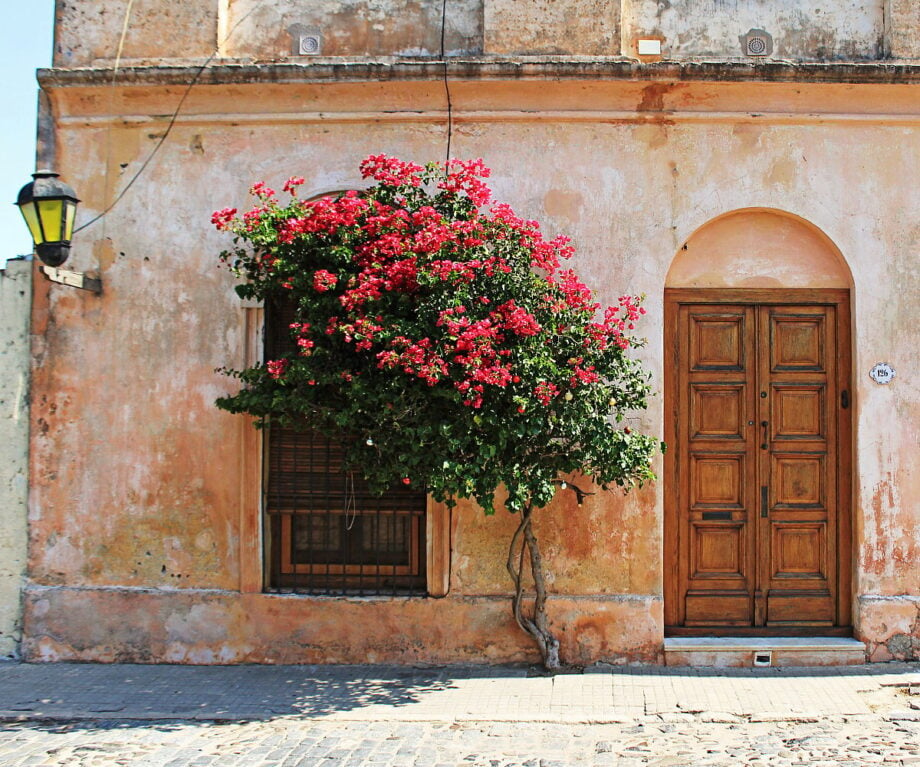
Along this and other streets, attractive rows of sycamore trees offer protection from the summer heat. Visit museums and an aquarium, climb to the top of a lighthouse, or enjoy spectacular sunsets from the waterfront; just don’t be surprised if you witness locals applauding the setting sun – it’s a particular Uruguayan custom.
Colonia del Sacramento is a one-hour boat ride across the river from Buenos Aires. Once you arrive in Colonia, the historic quarter is —like everything else— within walking distance from the ferry harbor.
Salta: A colonial getaway in Argentina’s wild northwest
Northwest Argentina is quickly becoming one of the country’s must-see destinations, thanks to a heady mix of eye-popping desert scenery, beautifully preserved colonial towns, indigenous history, and exquisite wineries. Salta is at the heart of it all, a centuries-old city that serves both as a base for discovering the exuberant surroundings, as well as a lively, cultural mecca in its own right.
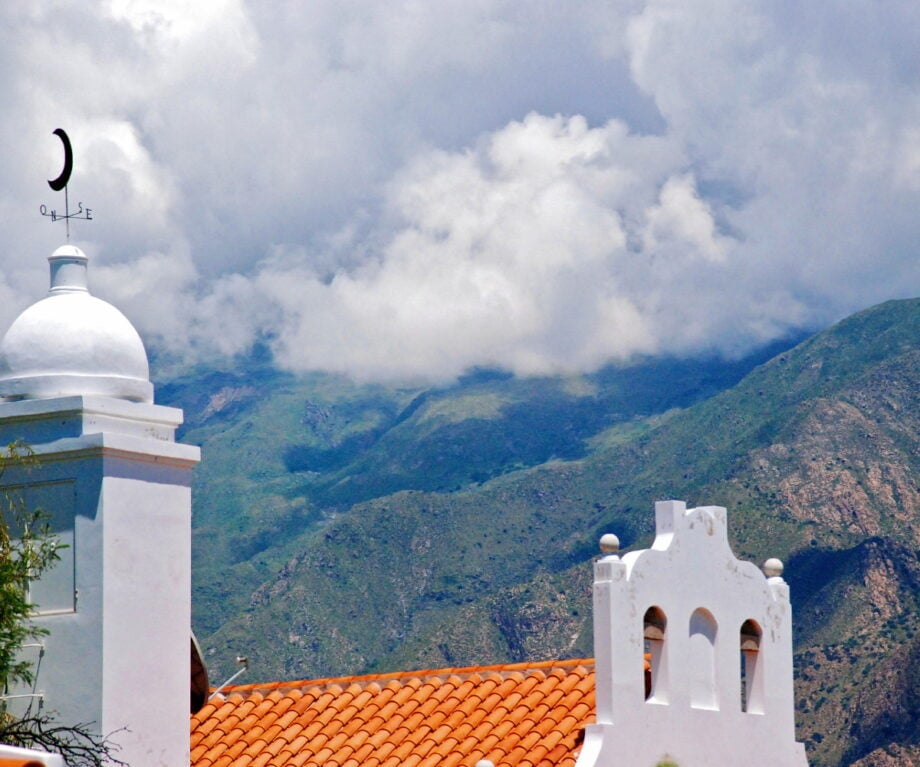
Venture to Salta to get under the skin of a region unchanged for centuries and which, unlike the rest of Argentina, is home to many indigenous peoples. The region’s most coveted colonial town, Salta is a place where fantastic museums, restaurants, and bars abound. In the center of town is a cable car taking you to the top of San Bernardo Mountain (1,454 m) for superb views over the city. And as Salta dates back to 1582, you can expect plenty of painstakingly preserved churches, the Cabildo (city hall), pretty plazas like the 9 de Julio and colorful facades to marvel at while the sun-dappled hills beyond town serve as a reminder of the adventures that await.
Then there’s the intoxicating countryside around Salta. Here, sweeping landscapes are shaped by everything from immense Andes mountains to lowland valleys, salt flats, and deserts dotted with cacti forests to lush meadows that call out to be explored. Some of the most astounding gorges can be found here, with dazzling rock formations that appear as though rainbows have been imprinted on their surface. So, whether on a bike tour, horseback ride or trek, discovering the jewels of Northwest Argentina is an absolute delight.
Cuenca: The Athens of Ecuador
Unquestionably one of Ecuador’s most attractive colonial cities, Cuenca not only offers a step back in time, but the laidback culture here is both endearing and addictive. This UNESCO World Heritage Site —one of the best examples of well-preserved colonial and indigenous heritage in the country— has cultural and architectural influences dating back over 10,000 years. First the indigenous Cañari people inhabited the river valley, next the Incan Empire, and finally the Spanish conquistadors in the 16th century.
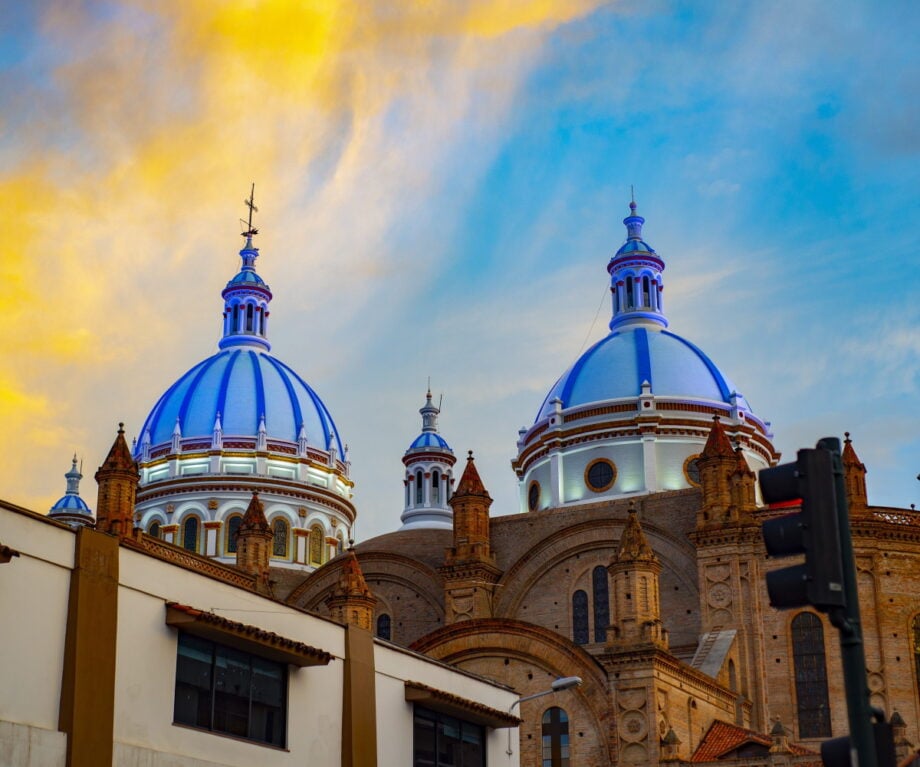
As the city was founded in that colonial epoch, it has a beautiful historic district with a remarkable cathedral and many stately Spanish colonial buildings. This means that any trip to Cuenca can easily be spent quietly wandering its cobbled streets and historical buildings. The center is magnificently colonial with lots of Neo-Gothic features, blue-domed spires and charming cobbled streets. Scale the Turi Hill for sweeping views of this across the city.
You’ll also be pleased to know that in the historic district, you can be pampered in one of its many excellent restaurants and that you can find a number of attractive boutique hotels, the furnishings of which will surround you with an appropriate atmosphere of bygone times. Many other old structures have been turned into museums and cafés, so soak up the atmosphere of this ancient place while casually sipping a cappuccino! Cuenca is rivaled only in Ecuador by Quito in terms of its rich past, though without quite the same level of urbanization one might find in the capital.
La Paz, Bolivia: “Where the earth meets the heavens”
Surrounded by snow-capped mountains, awash with colonial history, bustling markets, and fascinating museums; La Paz is a true South American icon. The ramshackle myriad of tightly woven, multi-layered buildings clinging to the hillside are as much of the spectacle as the delicate facades and pleasant plazas of the old town, just a taste of what to expect in wonderful La Paz – the world’s highest national capital.
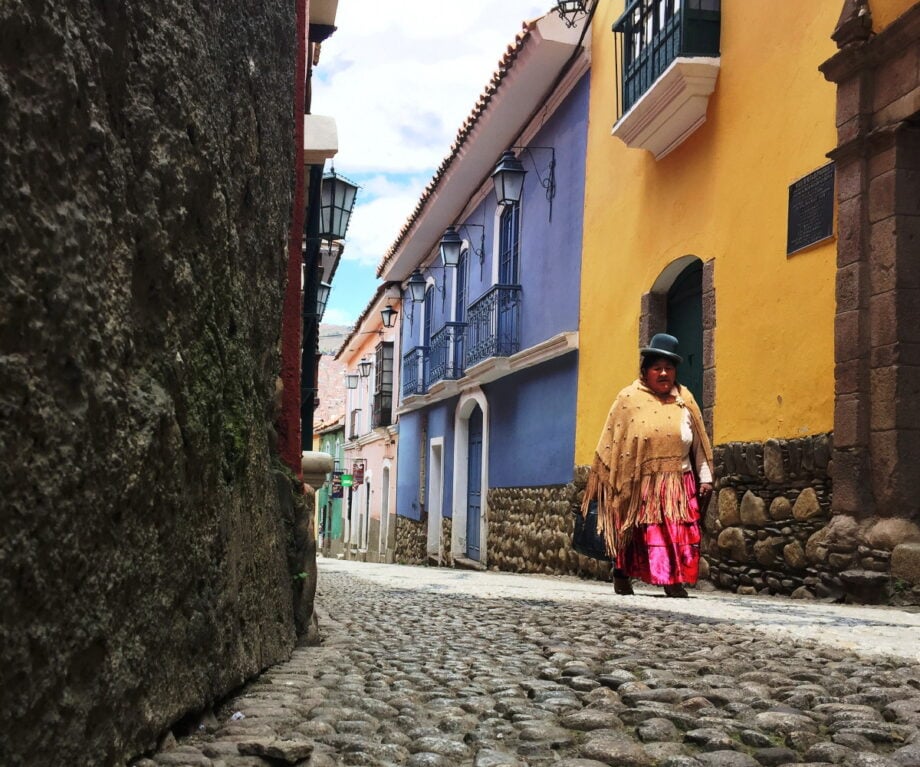
This versatile colonial city offers more than may be obvious to most travelers. A fusion of numerous museums, historic architecture, tight streets, and a dramatic mountainscape location all make for an intoxicating mix.
Once a center of Spanish colonial strength in the Andes mountain range and today the de facto capital of the Bolivian state, La Paz oozes contrasts and an unexpectedly cosmopolitan feel, though also a typically Bolivian authenticity in a privileged geographical spot.
Take a gondola for sublime aerial views, get lost in the revelry of one of the city’s many festivals, or enthrall yourself with endless exhibitions and artifacts across a treasure trove of museums before tucking into some fine food, making the most of the tasty treats central to La Paz’s ever-growing gourmet scene. This is still relatively unknown, though this thriving city and its historic center are certainly endearing, attracting travelers and tourists back to their frantic streets time and time again.
Though having possessing a turbulent and ofttimes violent past, the colonization of Latin America has produced towns and cities of stunning culture and architecture – classical Spanish facades and Latin fronts blend with their tropical surroundings, Baroque buildings nestle among palm trees and exotic sun fills European-style squares.
The authentic South American colonial destinations mentioned above, in addition to a fistful of others, are just waiting to be explored by adventurous travelers.
Did you enjoy this article?
Receive similar content direct to your inbox.

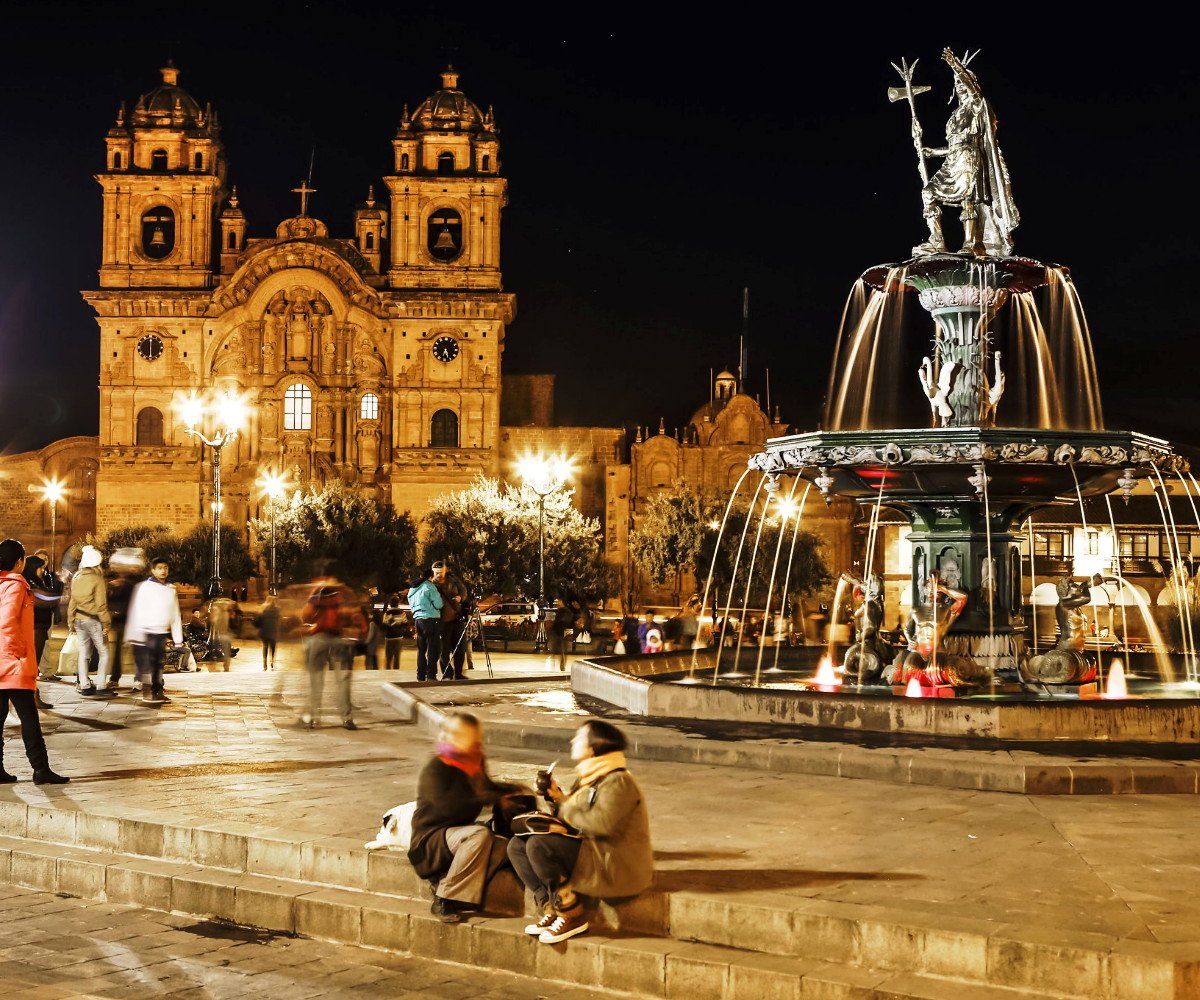


An absolutely fascinating post opening my eyes to a part of a world that I know very little about. I had no idea that Brazil had a Costa Verde.
Colonial is a difficult word, sometimes people feel uneasy about its use, as it’s got so many uneasy associations with the darker side of colonial times.
Personally, I believe that it’s totally wrong to wipe away a whole age. It would be wrong to ignore the glorious colonial architecture dotted through Central and South America. Your excellent pictures show what a rich legacy it left.
I can 100% endorse Quito. It is beautifully well preserved and well worth a stay of 4 or 5 days.
Long ago I called in on Cusco. I didn’t see it at the time but now I get the comparison with Rome. Wonderfully atmospheric.
Did you save the best to last? La Paz sounds beyond heavenly.
We’re thinking of a big trip next year, perhaps even as much as 3 weeks off from work. Lots of suggestions here if we do a grand Latin America tour which could be a possibility.
It’s interesting that the people of Cusco saw themselves as the centre of the Earth. How many other places have been guilty of such centric thinking?